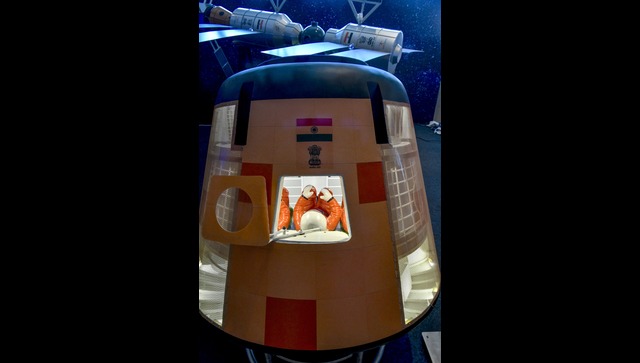The Indian Space Research Organisation (ISRO) is all set for the first test vehicle abort mission or TV-D1 as part of the Gaganyaan – India’s first human spaceflight programme. The flight test is slated for Saturday (21 October) at 8 am from Andhra Pradesh’s Sriharikota. The “short-duration” TV-D1 mission will demonstrate the effectiveness of the Crew Escape System, including various separation systems. ISRO’s ambitious Gaganyaan mission aims to send humans to space for a three-day mission and safely mark their return to Earth, by landing in Indian sea waters. India’s astronaut candidates have been undergoing rigorous training for the Gaganyaan programme for the past few years. Let’s take a look in detail. Training video In early October, the Indian Air Force (IAF) shared a video ahead of the 91st Air Force Day, which showed a glimpse of its astronaut candidates training for the Gaganyaan mission. An IAF spokesperson confirmed to Times of India (TOI) that the men seen in the video were those selected for the human spaceflight mission. The short clip, without revealing the identity of the astronaut designates, showcased their rigorous training. The 11-minute video titled ‘Air Power Beyond Boundary’ also displayed India’s fighter jets, transport aircraft, helicopters and missile capabilities.
According to TOI, ISRO is yet to decide on how many astronauts will be part of the crewed spaceflight. However, a November 2022 article on the Indian space agency’s website says the Gaganyaan mission envisages sending a crew of three members to an orbit of 400 km. Years-long training Four astronauts selected for the Gaganyaan have been undergoing mission specific training at the Astronaut Training Facility in Bengaluru. As per The Hindu report, these astronauts completed the first semester of crew training in March this year. By then, they had also finished a total of 39 weeks of training activities, the report added. According to TOI, these four participants were picked from among 60 IAF test pilots. Of these, 12 had cleared the “Level-1” selection conducted by IAF’s Institute of Aerospace Medicine (IAM). The final four candidates were shortlisted in 2019. The identity of these selected IAF pilots have so far been kept secret. These astronauts have been taking theoretical courses, physical fitness training, simulator training and flight suit training. The ISRO and Indian Institute of Science faculty have given the candidates over 200 lectures, while the likely crew members have also participated in 75 physical training sessions.
In 2020, they were sent to Russia where they finished generic space flight training at Gagarin Cosmonaut Training Centre. After their return to India the following year, they kicked off their training here. The mission specific training in India consists of theoretical courses in engineering disciplines and training on the Gaganyaan flight system, aero-medical training, recovery and survival training, and micro-gravity familiarisation through parabolic flights. As per ISRO , periodical flying practice and yoga are also part of the training curriculum. The theoretical courses on engineering disciplines include understanding the basics of spaceflight, propulsion, aerodynamics, as well as courses on launch vehicles and spacecraft, reported The Hindu. ALSO READ: What is Gaganyaan Mission? Why is its first flight test so significant? Training by US During Prime Minister Narendra Modi’s trip to Washington in June, India and the United States announced plans to enhance space cooperation, which included a joint ISRO-NASA effort to the International Space Station (ISS) in 2024. The joint statement at the time had said NASA would provide “advanced training” to Indian astronauts at one of its facilities. This proposed India-US mission for next year may see Gaganyaan astronauts travelling to the ISS. In July, ISRO chairman S Somanath told Indian Express, “There was a statement on human spaceflight which was about India and the US working together for a combined human spaceflight to the ISS. This particular activity is something that the US wants and India also finds it beneficial for the Indian space programme because once an Indian prepares to go to the ISS they will undergo a training programme in the US and they are going to come back and discuss how the training and skills were imparted and this will help design our Gaganyaan better”. The US had offered to train the four Indian astronauts for the ‘Gaganyaan’ mission, as per a Deccan Herald report in February. While an unmanned spacecraft is likely to be scheduled for early next year, the crewed Gaganyaan mission could be launched by 2025. With inputs from agencies
)